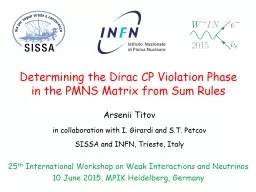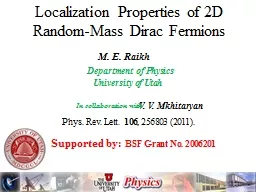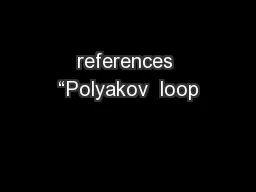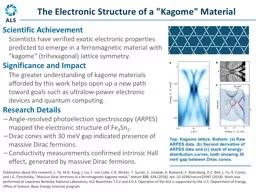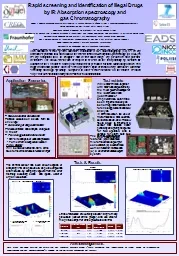PPT-Determining the Dirac CP Violation
Author : yoshiko-marsland | Published Date : 2015-10-07
Phase in the PMNS Matrix from Sum Rules Arsenii Titov in collaboration with I Girardi and ST Petcov SISSA and INFN Trieste Italy 25 th International Workshop
Presentation Embed Code
Download Presentation
Download Presentation The PPT/PDF document "Determining the Dirac CP Violation" is the property of its rightful owner. Permission is granted to download and print the materials on this website for personal, non-commercial use only, and to display it on your personal computer provided you do not modify the materials and that you retain all copyright notices contained in the materials. By downloading content from our website, you accept the terms of this agreement.
Determining the Dirac CP Violation: Transcript
Download Rules Of Document
"Determining the Dirac CP Violation"The content belongs to its owner. You may download and print it for personal use, without modification, and keep all copyright notices. By downloading, you agree to these terms.
Related Documents

